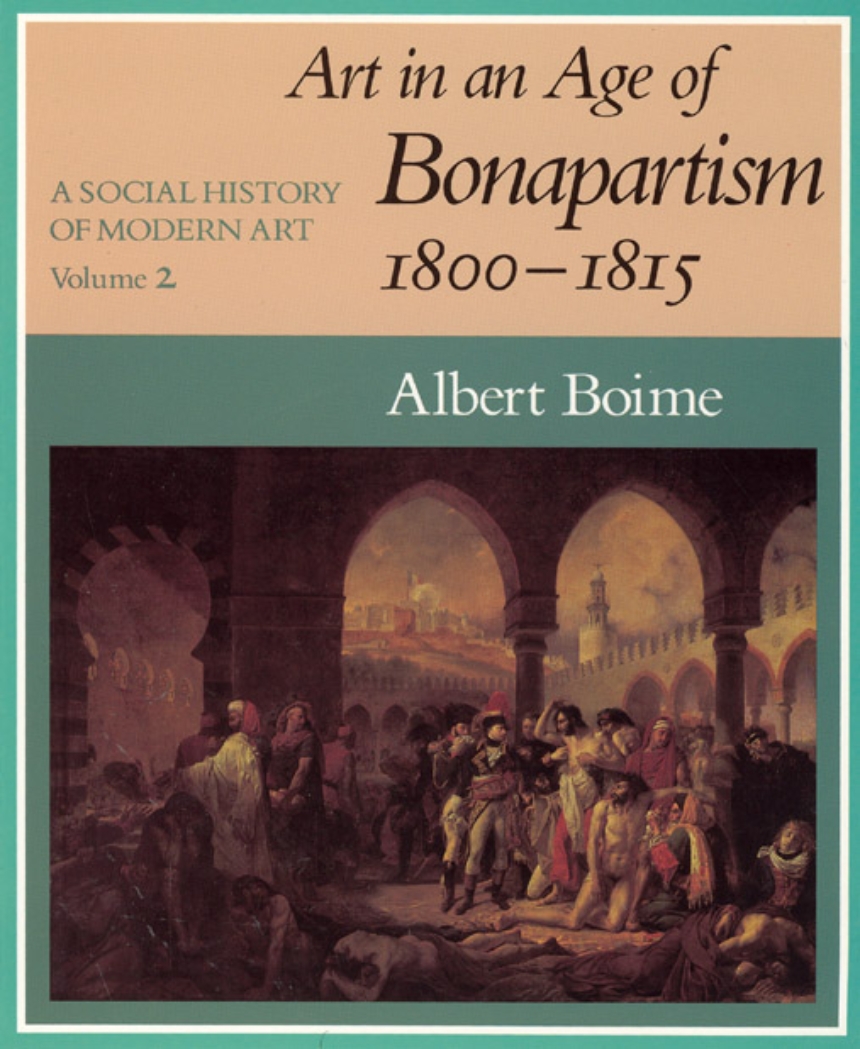A Social History of Modern Art, Volume 2
Art in an Age of Bonapartism, 1800-1815
In this second volume, Albert Boime continues his work on the social history of Western art in the Modern epoch. This volume offers a major critique and revisionist interpretation of Western European culture, history, and society from Napoleon’s seizure of power to 1815. Boime argues that Napoleon manipulated the production of images, as well as information generally, in order to maintain his political hegemony. He examines the works of French painters such as Jacques-Louis David and Jean Auguste Dominique Ingres, to illustrate how the art of the time helped to further the emperor’s propagandistic goals. He also explores the work of contemporaneous English genre painters, Spain’s Francisco de Goya, the German Romantics Philipp Otto Runge and Caspar David Friedrich, and the emergence of a national Italian art.
Heavily illustrated, this volume is an invaluable social history of modern art during the Napoleonic era.
Stimulating and informative, this volume will become a valuable resource for faculty and undergraduates.—R. W. Liscombe, Choice
Heavily illustrated, this volume is an invaluable social history of modern art during the Napoleonic era.
Stimulating and informative, this volume will become a valuable resource for faculty and undergraduates.—R. W. Liscombe, Choice
734 pages | 333 halftones | 7-1/2 x 9 | © 1993
A Social History of Modern Art
Art: Art--General Studies
Table of Contents
Illustrations
Introduction
I. The Adversaries
1. The Napoleonic Era (1800-15)
2. The Iconography of Napoleon
3. English Art in the Napoleonic Era
4. France and Spain
II. The Downtrodden and their Regeneration
5. Napoleon’s Invasion of Prussia and the Rise of German Romantic Nationalism
6. The Political Foundations of the German Romantic Pioneers and Their Patrons
7. Patrons of the New Movement
8. Philipp Otto Runge
9. Caspar David Friedrich
10. Napoleon in Italy
Notes
Index
Introduction
I. The Adversaries
1. The Napoleonic Era (1800-15)
2. The Iconography of Napoleon
3. English Art in the Napoleonic Era
4. France and Spain
II. The Downtrodden and their Regeneration
5. Napoleon’s Invasion of Prussia and the Rise of German Romantic Nationalism
6. The Political Foundations of the German Romantic Pioneers and Their Patrons
7. Patrons of the New Movement
8. Philipp Otto Runge
9. Caspar David Friedrich
10. Napoleon in Italy
Notes
Index
